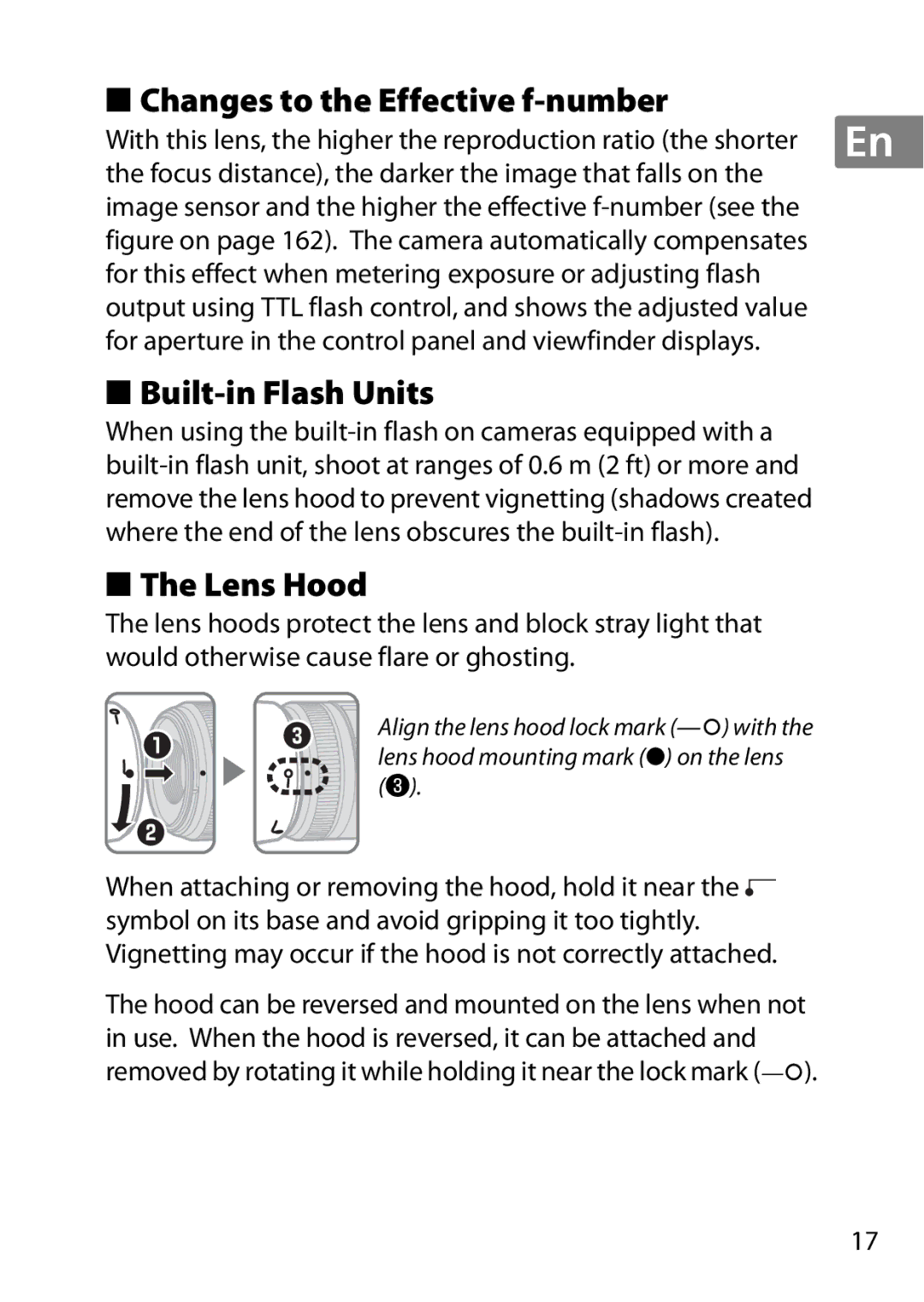
■ Changes to the Effective f-number
With this lens, the higher the reproduction ratio (the shorter | En |
the focus distance), the darker the image that falls on the |
|
image sensor and the higher the effective |
|
figure on page 162). The camera automatically compensates |
|
for this effect when metering exposure or adjusting flash |
|
output using TTL flash control, and shows the adjusted value |
|
for aperture in the control panel and viewfinder displays. |
|
■ |
|
When using the |
|
| |
remove the lens hood to prevent vignetting (shadows created |
|
where the end of the lens obscures the |
|
■ The Lens Hood |
|
The lens hoods protect the lens and block stray light that |
|
would otherwise cause flare or ghosting. |
|
Align the lens hood lock mark
When attaching or removing the hood, hold it near the![]() symbol on its base and avoid gripping it too tightly. Vignetting may occur if the hood is not correctly attached.
symbol on its base and avoid gripping it too tightly. Vignetting may occur if the hood is not correctly attached.
The hood can be reversed and mounted on the lens when not in use. When the hood is reversed, it can be attached and removed by rotating it while holding it near the lock mark
17
